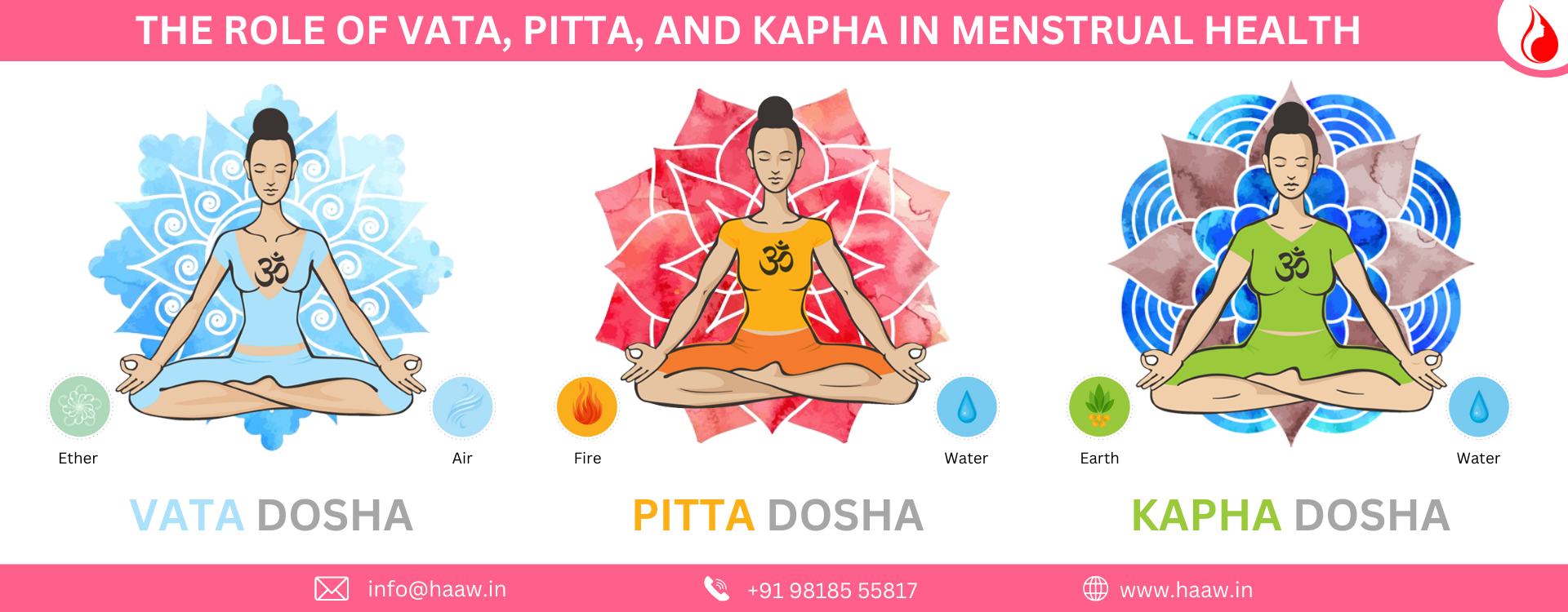
We covered in our earlier blogs, "Balancing Your Cycle Naturally with Ayurveda," and "The Ayurvedic View of Menstrual Phases," how Ayurveda views the menstrual cycle as a dynamic interplay of three distinct phases each ruled by a unique dosha for the ultimate promotion of general well-being. This cycle starts with the Vata phase of menstruation, days 1-5, when the body detoxifies by letting go of menstrual blood, and rest, warmth, and grounding foods are a must to stabilize energy. The cycle then moves toward the Pitta phase, days 6 through 14, where energy and renewal explode, and cooling, hydrating foods nourish it to help in its regenerative processes and ovulation. Lastly, the Kapha phase is characterized by preparation and nourishment for possible pregnancy or a new cycle. This is the luteal, days 15-28 phase, in which a light wholesome diet with practices of stress management will keep hormonal balance intact. Embracing these Ayurvedic principles at each phase is a natural holistic approach to menstrual health.
According to Ayurveda, a menstrual cycle is not just solely reproductive but rather an indicator of a woman's health status. A well-balanced cycle points to doshas being in balance, whereas deviations from normal menstrual patterns may indirectly indicate that something's off. Identifying which dosha is out of kilter allows the practitioner to apply interventions that attack the root rather than the symptom.
Ayurveda believes that the menstrual cycle is an internal cleansing process reflecting the balance of these energies. A well-regulated cycle often reflects balanced doshas and the disturbances in the cycle can point towards one or more doshas being out of balance.
Primary function in menstruation: Vata, particularly the sub-type called Apana Vayu, governs the downward flow of energy and fluids, including menstrual blood.
Balanced State
Smooth and pain-free menstrual flow.
Regular cycle timing.
Imbalanced State
Irregular periods.
Scanty or obstructed flow.
Severe cramps and dryness.
How to Balance Vata
Warm, cooked, and easily digestible foods.
Rest and relaxation during the menstrual phase.
Gentle oil massages with sesame oil.

Primary function in menstruation: Pitta governs heat, metabolism, and hormonal activity, which influence ovulation, blood flow, and emotional responses.
Balanced State
Moderate and steady flow.
Absence of inflammation or irritation.
Imbalanced State
Heavy or excessive bleeding (menorrhagia).
Hot flashes, inflammation, or burning sensations.
Mood swings, irritability, or anger.
How to Balance Pitta
Cooling foods like coconut water, cucumber, and fresh fruitsdigestible foods.
Avoid spicy, sour, and oily foods.
Herbal teas with coriander or fennel.

Primary function in menstruation: Kapha provides lubrication, nourishment, and strength to the reproductive tissues and governs the build-up of uterine lining during the menstrual cycle.
Balanced State
Proper nourishment and smooth flow.
Minimal bloating or stagnation.
Imbalanced State
Heaviness, bloating, or water retention.
Thick and sticky menstrual flow.
Fatigue and lethargy during the cycle.
How to Balance Vata
Light and warm foods, such as steamed vegetables and spices like ginger.
Regular physical activity to prevent stagnation.
Avoidance of dairy, cold foods, and overeating.

Time for Consulting a Medical Practitioner
Though Ayurveda provides an extensive approach for analyzing and handling the menstrual condition, it does not replace a doctor's consultation.
Women experiencing very severe pains, heavy menstrual flows, or changes in the pattern of cycles must consult a physician. Thus, Ayurveda can complement mainstream medical services in a more balanced and integrated way to preserve menstrual health.
Vata is responsible for movement and emotional balance.
Pitta is responsible for metabolism and inflammatory responses.
Kapha is responsible for structure and nourishment.
The causes of irregular menstruation in women can be explained by the following factors, which can also help to rebalance their physiological processes through certain dietary choices, lifestyle modifications, mind-body practices, and properly selected herbal remedies.
By adopting this all-encompassing strategy, women can utilize their bodies' innate cycles to enhance not only their menstrual health but also their general vigor and wellness.
Conclusion
The interplay of Vata, Pitta, and Kapha in menstrual health reflects the Ayurvedic view that every bodily process is interconnected. By understanding Women experiencing very severe pains, heavy menstrual flows, or changes in the pattern of cycles must consult a physician. Thus, Ayurveda can complement mainstream medical services in a more balanced and integrated way to preserve menstrual health.